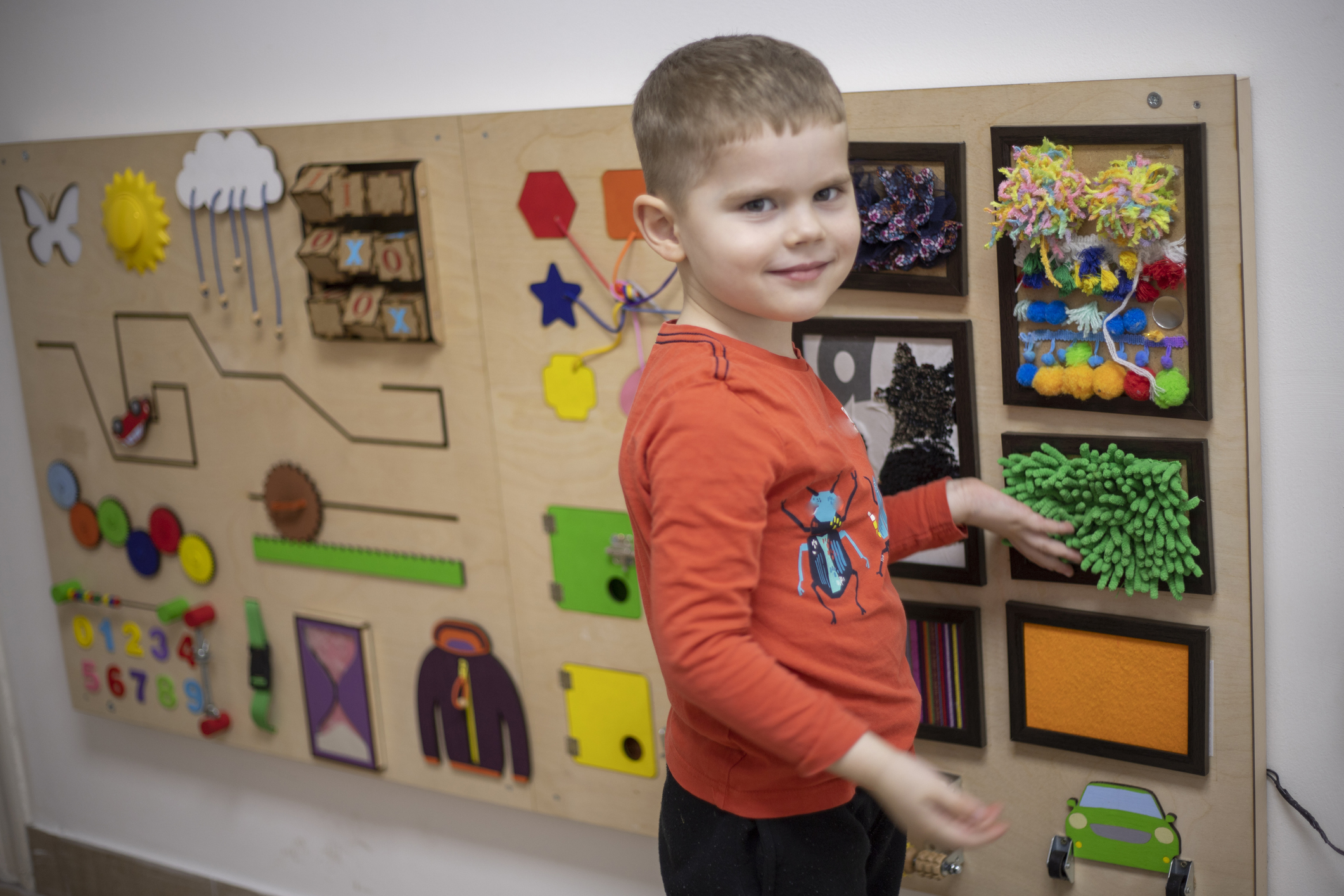Welcome to our blog post, “A Teacher’s Guide to Trauma-Informed Classrooms.” As educators, we must recognise the impact that trauma can have on our students and their learning experiences. Trauma can manifest in various ways, affecting a student’s behaviour, emotions, and even physical well-being. In this blog post, we will explore the signs of trauma in students and provide practical strategies for creating a trauma-informed classroom.
Understanding the effects of trauma on students is the first step towards creating a supportive learning environment. We will delve into the behavioural, emotional, and physical indicators of trauma, helping you to identify and empathize with students who may be struggling. By recognizing these signs, you can respond with compassion and provide the necessary support to help them thrive academically and emotionally.
Once we have a deeper understanding of trauma, we will explore effective teaching strategies that can be implemented in a trauma-informed classroom. Creating a safe and predictable environment is essential for students who have experienced trauma, as it helps them feel secure and comfortable in their learning environment. We will also discuss the importance of promoting emotional regulation skills and building positive relationships with students, fostering a sense of belonging and trust.
Supporting students with trauma requires a collaborative effort between the school, parents, caregivers, and the community. We will explore various school-based interventions that can be implemented to provide additional support and resources for students in need. Additionally, we will discuss the importance of collaborating with parents and caregivers, as well as utilizing community resources, to create a comprehensive support system for students dealing with trauma.
Finally, we will address the crucial topic of self-care for teachers in a trauma-informed classroom. Educators often experience secondary traumatic stress, which can impact their well-being and ability to support their students effectively. We will provide insights into understanding secondary traumatic stress, as well as offer self-care strategies and the importance of seeking professional support when needed.
Join us on this journey to create trauma-informed classrooms that empower and support our students. By implementing the strategies and knowledge shared in this blog post, we can make a lasting positive impact on the lives of our students and create an inclusive and nurturing learning environment for all.
Understanding Trauma: Its Impact on Students and Learning
Trauma can have a profound impact on students’ overall well-being and academic performance. In this section, we will explore the concept of trauma and its effects on students in more detail.
What is Trauma?
- Definition of trauma: Begin by explaining what trauma is and how it can be defined. Highlight that trauma is not limited to major catastrophic events but can also result from ongoing stressful experiences.
- Types of trauma: Discuss different types of trauma that students may experience, such as physical abuse, neglect, domestic violence, natural disasters, loss, or witnessing violence.
The Impact of Trauma on Students
- Academic challenges: Explain how trauma can significantly impact a student’s ability to learn, concentrate, and retain information. Discuss the potential impact on academic performance, including lower grades, decreased motivation, and difficulties with attention and memory.
- Emotional well-being: Explore the emotional consequences of trauma, such as anxiety, depression, anger, and emotional dysregulation. Emphasize that these emotional challenges can significantly affect a student’s behaviour and engagement in the classroom.
- Social difficulties: Highlight how trauma can impact a student’s social interactions, leading to isolation, withdrawal, or difficulties in forming and maintaining relationships with peers and teachers.
Trauma-Informed Approach to Education
- Introduction to trauma-informed approach: Introduce the concept of a trauma-informed approach in education, which involves creating an environment that understands and responds to the needs of traumatized students.
- Shifting perspectives: Discuss the importance of shifting from asking “What’s wrong with you?” to “What happened to you?” when working with students who have experienced trauma. Emphasize the need for empathy and understanding.
- Creating a safe and supportive environment: Explain how a trauma-informed approach focuses on creating an environment that is safe, predictable, and supportive for all students. Discuss the significance of establishing trust and building positive relationships.
- Benefits of trauma-informed education: Highlight the potential benefits of implementing a trauma-informed approach, such as improved academic outcomes, increased student engagement, enhanced emotional well-being, and a sense of belonging for students.
Understanding the impact of trauma on students and recognizing the importance of a trauma-informed approach lays the foundation for creating a supportive learning environment. In the next section, we will delve deeper into identifying signs of trauma in students, enabling teachers to better understand and respond to their needs.
Identifying Signs of Trauma in Students
Identifying signs of trauma in students is a crucial step in providing appropriate support and intervention. In this section, we will explore various indicators that can help teachers recognize when a student may be experiencing trauma.
Behavioral Indicators of Trauma
- Changes in behaviour: Discuss how trauma can manifest in behavioural changes, such as increased aggression, withdrawal, or acting out. Highlight the importance of monitoring any sudden or significant shifts in a student’s behaviour.
- Hyperarousal or hypervigilance: Explain how trauma can lead to heightened states of arousal or hypervigilance, where students may appear constantly on edge, easily startled, or constantly scan their environment for perceived threats.
- Avoidance behaviours: Discuss how some students may engage in avoidance behaviours to cope with trauma, such as avoiding certain places, people, or activities that remind them of the traumatic event.
Emotional Indicators of Trauma
- Intense emotional reactions: Explain that trauma can lead to intense emotional reactions, such as frequent outbursts of anger, fear, or sadness that seem disproportionate to the situation. Highlight the importance of recognizing these emotional fluctuations.
- Emotional numbing or detachment: Discuss how some students may display emotional numbing or detachment as a defensive mechanism to protect themselves from overwhelming emotions associated with trauma.
- Mood swings: Highlight that trauma can result in frequent mood swings, with students experiencing periods of irritability, sadness, or anxiety that may seem unpredictable or unrelated to external circumstances.
Physical Indicators of Trauma
- Physical complaints: Explain that students who have experienced trauma may frequently complain of physical ailments such as headaches, stomachaches, or other unexplained physical symptoms.
- Sleep disturbances: Discuss how trauma can disrupt a student’s sleep patterns, leading to difficulties falling asleep, nightmares, or frequent night awakenings.
- Changes in appetite: Highlight that trauma can affect a student’s appetite, resulting in either a significant decrease or increase in food intake.
By recognizing these signs of trauma, teachers can better understand the challenges that students may be facing and respond with empathy and appropriate support. In the next section, we will explore practical strategies for implementing trauma-informed teaching strategies in the classroom, creating a safe and supportive environment for all students.
Implementing Trauma-Informed Teaching Strategies
Implementing trauma-informed teaching strategies is essential for creating a safe and supportive learning environment for students who have experienced trauma. In this section, we will explore practical strategies that teachers can employ to support their students’ needs effectively.
Creating a Safe and Predictable Environment
- Establishing clear expectations: Discuss the importance of setting clear expectations and rules in the classroom to create a sense of predictability and structure for students. Emphasize the need for consistency in enforcing these expectations.
- Safe physical space: Explain how arranging the classroom in a way that promotes physical safety and comfort can help students feel secure. Discuss strategies such as providing cosy corners, sensory tools, or designated quiet areas for students to retreat to when needed.
- Predictable routines and schedules: Highlight the significance of establishing predictable routines and schedules in the classroom. Discuss how having a consistent daily structure can provide a sense of stability and reduce anxiety for students who have experienced trauma.
Promoting Emotional Regulation Skills
- Teaching self-regulation techniques: Discuss the importance of equipping students with skills to regulate their emotions effectively. Explore strategies such as deep breathing exercises, mindfulness activities, or practising gratitude to help students manage their emotional responses.
- Providing emotional support: Highlight the importance of creating a supportive and empathetic environment where students feel comfortable expressing their emotions. Discuss the role of active listening, validating emotions, and providing guidance in developing healthy coping mechanisms.
- Teaching problem-solving skills: Explain how teaching students problem-solving techniques can empower them to handle difficult situations and conflicts more effectively. Discuss strategies such as identifying emotions, brainstorming solutions, and evaluating potential outcomes.
Building Positive Relationships
- Cultivating a supportive teacher-student relationship: Emphasize the importance of building positive and trusting relationships with students who have experienced trauma. Discuss strategies such as active listening, showing empathy, and providing consistent support and encouragement.
- Fostering a sense of belonging: Highlight the significance of creating an inclusive classroom environment where all students feel valued and included. Discuss strategies such as cooperative learning activities, group discussions, and celebrating diversity to foster a sense of belonging.
- Partnering with the school community: Discuss the importance of collaborating with other teachers, counsellors, and support staff to provide comprehensive support for students who have experienced trauma. Highlight the value of multidisciplinary approaches in meeting individual student needs.
By implementing trauma-informed teaching strategies, teachers can create an environment that supports the healing and growth of students who have experienced trauma. In the next section, we will explore the role of schools and communities in supporting students with trauma and providing additional resources and interventions.
Supporting Students with Trauma: Role of School and Community
Supporting students with trauma requires a collaborative effort between the school, parents, caregivers, and the wider community. In this section, we will delve into the various ways in which schools and communities can work together to provide comprehensive support for students who have experienced trauma.
School-Based Interventions
- Trauma-informed policies and procedures: Discuss the importance of developing trauma-informed policies and procedures at the school level. Highlight the significance of training staff members to recognize and respond to signs of trauma in students, as well as establishing protocols for referral and intervention.
- Individualized support plans: Explain the value of creating individualized support plans for students with trauma, in collaboration with teachers, counselors, and other relevant professionals. Discuss the importance of regularly reviewing and adjusting these plans based on the student’s progress and changing needs.
- Specialized counselling services: Highlight the role of school counsellors in providing counselling services specific to trauma. Discuss the importance of offering a safe and confidential space for students to express their emotions, process their experiences, and develop coping strategies.
Collaboration with Parents and Caregivers
- Open and frequent communication: Emphasize the importance of maintaining open and frequent communication with parents and caregivers of students with trauma. Discuss the significance of sharing information about the student’s progress, providing resources and strategies for support at home, and seeking input from parents to better understand the student’s needs.
- Parent education and support: Explain the value of providing parent education and support programs that focus on understanding trauma and its impact on children. Discuss the importance of equipping parents with strategies to support their child’s healing and growth.
- Parent involvement in the school community: Highlight the importance of actively involving parents and caregivers in the school community. Discuss strategies such as parent-teacher conferences, volunteer opportunities, and parent workshops to foster collaboration and create a sense of shared responsibility.
Utilizing Community Resources
- Referral to external support services: Discuss the significance of connecting students with trauma to external support services within the community, such as mental health professionals, trauma-focused therapy, or support groups. Highlight the importance of establishing partnerships with these resources to ensure a seamless continuum of care for students.
- Collaboration with community organizations: Explore the potential for collaboration with community organizations that specialize in trauma support, such as local mental health agencies, youth centres, or social service providers. Discuss how partnerships can provide additional resources, expertise, and opportunities for students.
- Promoting trauma-informed initiatives in the community: Highlight the importance of advocating for trauma-informed initiatives in the broader community. Discuss the potential for raising awareness, providing training, and promoting trauma-informed practices beyond the school setting.
By working together, schools and communities can create a robust support system that addresses the unique needs of students who have experienced trauma. In the next section, we will focus on the importance of self-care for teachers in a trauma-informed classroom.
Self-Care for Teachers in a Trauma-Informed Classroom
Practising self-care is essential for teachers working in a trauma-informed classroom. Taking care of your well-being allows you to better support your students and maintain your emotional resilience. In this section, we will explore the importance of self-care and provide strategies for teachers to prioritize their own mental and emotional health.
Understanding Secondary Traumatic Stress
- Definition of secondary traumatic stress: Explain what secondary traumatic stress is and how it can affect teachers. Discuss how witnessing or hearing about the traumatic experiences of students can impact teachers’ well-being, leading to symptoms similar to those experienced by individuals who directly experience trauma.
- Recognizing the signs of secondary traumatic stress: Highlight the common signs of secondary traumatic stress, such as emotional exhaustion, irritability, difficulty sleeping, and feeling emotionally overwhelmed. Encourage teachers to be self-aware and recognize when they may be experiencing these symptoms.
- Normalizing self-care: Remind teachers that experiencing secondary traumatic stress is a normal response to working with students who have experienced trauma. Emphasize that self-care is not selfish but rather an essential practice to maintain their well-being.
Employing Self-Care Strategies
- Prioritizing physical health: Encourage teachers to prioritize their physical health by getting enough sleep, engaging in regular exercise, and maintaining a balanced diet. Explain how taking care of their bodies can positively impact their mental and emotional well-being.
- Practising stress management techniques: Provide teachers with various stress management techniques, such as deep breathing exercises, mindfulness meditation, or engaging in hobbies and activities they enjoy. Discuss the importance of finding healthy ways to relax and recharge.
- Setting boundaries: Emphasize the importance of setting boundaries between work and personal life. Encourage teachers to establish a dedicated time for self-care, relaxation, and spending quality time with family and friends.
- Seeking support: Highlight the value of seeking support from colleagues, mentors, or support groups. Encourage teachers to engage in open and honest conversations about their experiences, share their challenges, and seek advice or guidance when needed.
Seeking Professional Support
- Recognizing the need for professional support: Explain that sometimes self-care strategies may not be enough, and it is essential for teachers to recognize when they need professional support. Discuss the importance of seeking help from mental health professionals who specialize in trauma or stress management.
- Accessing available resources: Provide information about available resources such as employee assistance programs, counselling services, or workshops focused on teacher well-being. Encourage teachers to take advantage of these resources to address any emotional or mental health concerns.
- Creating a supportive work environment: Advocate for the importance of creating a supportive work environment where teachers feel comfortable discussing their well-being and seeking help without fear of judgment or stigma. Highlight the role of school administration in fostering a culture of well-being and support.
By prioritizing self-care, teachers can maintain their well-being and provide the best support possible to students who have experienced trauma. Remember, taking care of yourself is not selfish but a necessary step in creating a sustainable and effective trauma-informed classroom.
Related posts:
 Creating a Trauma-Informed Classroom
Creating a Trauma-Informed Classroom
 Creating Safe Spaces: Strategies for Fostering Healing and Support in Trauma-Informed Classrooms
Creating Safe Spaces: Strategies for Fostering Healing and Support in Trauma-Informed Classrooms
 Empowering Students’ Voices: Promoting Agency and Resilience in Trauma-Informed Classrooms
Empowering Students’ Voices: Promoting Agency and Resilience in Trauma-Informed Classrooms
 Promoting Self-Care for Teachers: Supporting Wellbeing in Trauma-Informed Classrooms
Promoting Self-Care for Teachers: Supporting Wellbeing in Trauma-Informed Classrooms




